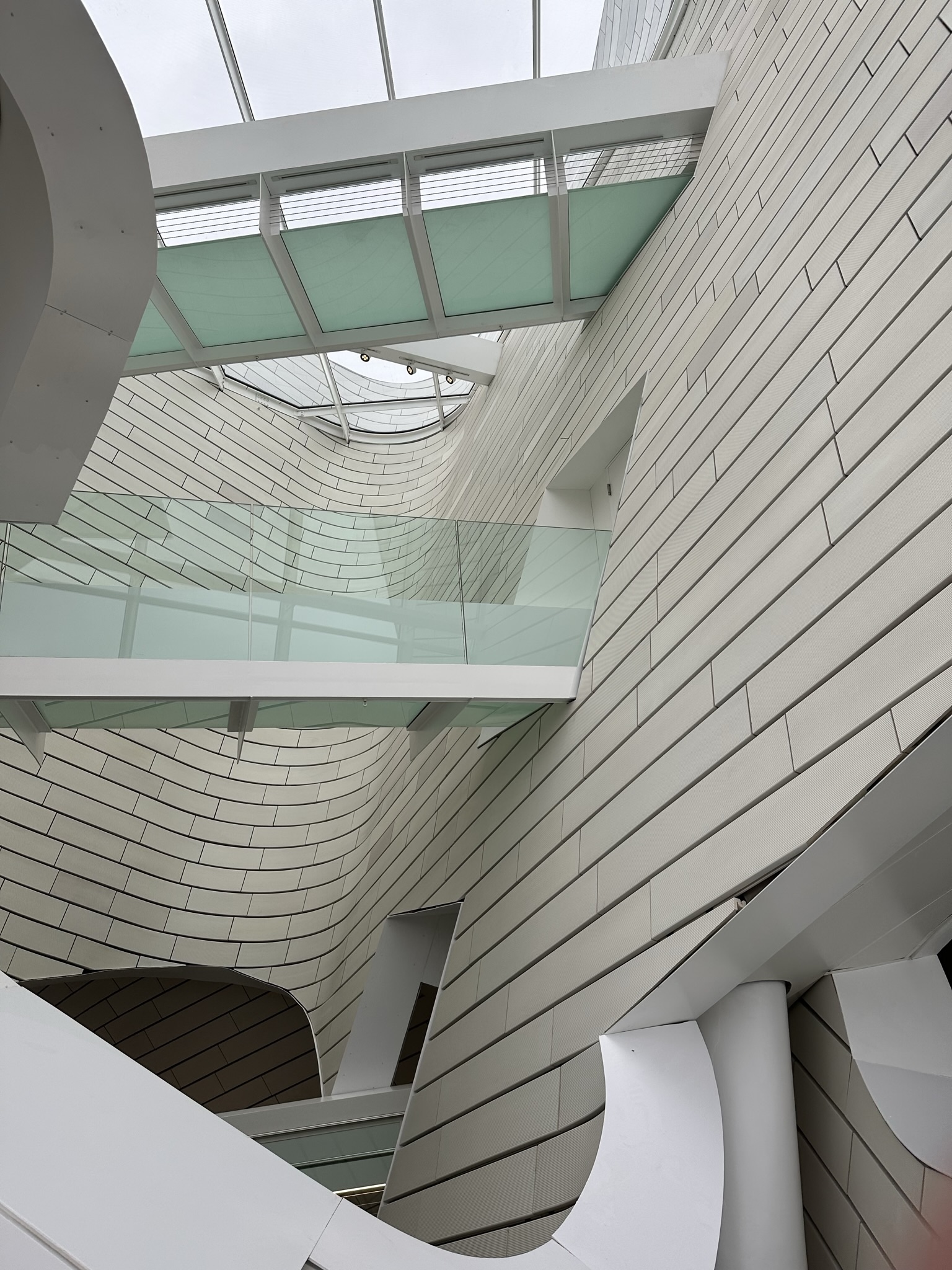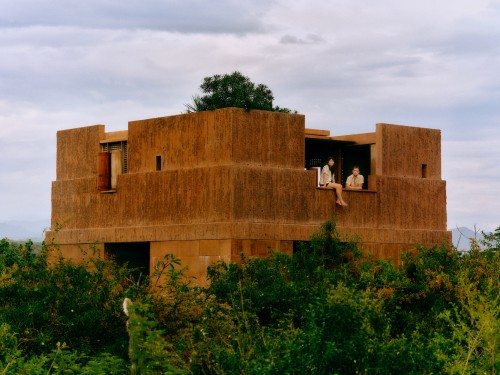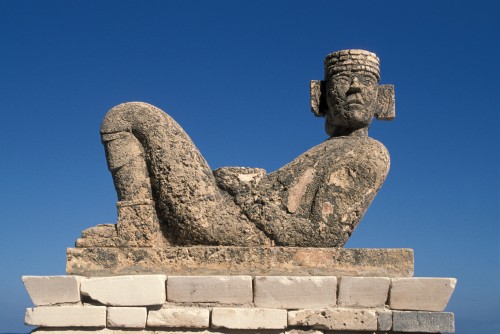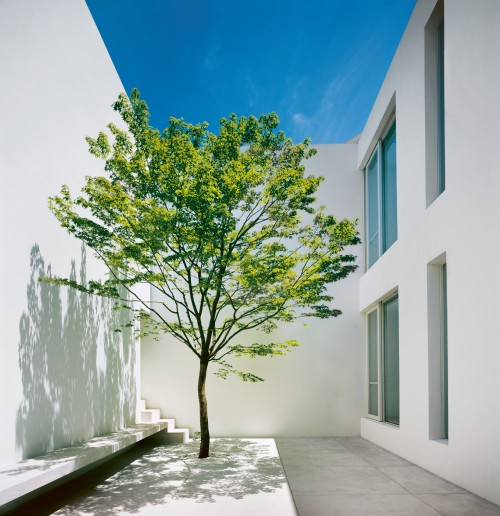The material’s revival has subtle lessons for an era in which attractiveness is the subject of some rather blunt debates.

For the tallest tower in Midtown Manhattan, One Vanderbilt, the firm Kohn Pedersen Fox clad the building in alternating panels of glass and aluminum, along with thousands of scalloped, champagne-colored terra-cotta spandrels to catch the light.
Disney’s Hudson Square headquarters, by SOM, employs a matte emerald façade with double- and triple-columned terra-cotta pilasters, a conspicuous signal of corporate sophistication.
And in Southern California, Morphosis looked to terra-cotta for the Orange County Museum of Art, wrapping the project in a traditional running bond pattern warped by the building’s angular geometry.
Terra-cotta is rising: The nation’s best-known designers are turning to the world’s oldest material to build their most important projects. The resurgence of architectural ceramics marks an aesthetic shift toward the old ways. It’s more than just a vogue: Terra-cotta is proving itself to be an adaptable and recyclable material and, as architects turn to it for more and more projects, their work is changing architectural ceramics, both as an industry and technology.
For clients and observers alike, the appeal of terra-cotta is plain—visible, even, on the skyline, in projects such as SHoP Architects’ supertall 111 West 57th Street. But the material’s revival has subtle lessons for an era in which beauty is the subject of some rather blunt debates.
“It can be made any color, any type of shape. It gave the architectural world a little more freedom than glass or metal had traditionally—definitely more than brick,” says Laura Rygielski, CEO of Boston Valley Terra Cotta, one of the nation’s leading manufacturers of architectural ceramics. “That helped spur some more designs, a little more adventurous and more bespoke.”
Twenty years ago, Buffalo’s Boston Valley was one of just two big U.S. terra-cotta manufacturers, along with Gladding McBean in suburban Sacramento. At that time, Boston Valley was focused on historical retrofits, with much of the work hand-pressed by artisans. Although manufacturers in other countries were already working with terra-cotta for cladding, Rygielski says, no American company was doing so. Today, Boston Valley is known as a partner on ambitious projects—including the Orange County Museum of Art and One Vanderbilt.
The Shildan Group, whose headquarters are located in Mount Laurel, New Jersey, introduced extruded terra-cotta rain screens and sunscreens to the U.S. market, according to Jen Marchesani, vice president of sales and manufacturing. She points to two projects at the University of Michigan that show how much the industry has changed in just a short time: For the Biomedical Science Research Building, designed by Polshek Partnership (now Ennead Architects), in 2006, the Shildan Group supplied a fairly traditional terra-cotta screen. Ennead once again partnered with the Shildan Group for Michigan’s Biological Science Building, which opened in 2019—this time on a rhythmic array of vertical panels and column covers with four-inch-deep profiles.
“Right now we’re seeing a lot of terra-cotta within the industry’s push for panelization,” says Marchesani, referring to curtain-wall systems. “Build it in a shop and put it on the building.”
Demand is changing the architectural ceramics industry in a number of ways: Companies from Germany, Austria, China, and other countries have moved into the U.S. market, while shops such as Boston Valley have introduced factory machines alongside their sculptors. There is a natural limit to natural materials: Making building materials out of clay is a process that can’t be sped up. But glazing offers endless possibilities for finishes and textures and clay comes with virtually zero waste.
“Terra-cotta is a material that can express itself,” says Laura Garófalo, associate professor of architecture at Carnegie Mellon University. “Architects coming out of schools where sustainability is a driving force are very much interested in the materials that are less extractive, less abusive in their engagement with the environment, but also beautiful and haptically provocative.”
Garófalo and Omar Khan, head of architecture at Carnegie Mellon, are the organizers of the Architectural Ceramic Assemblies Workshop (ACAW), an annual incubator for new projects in terra-cotta. For nearly a decade, the workshop—a collaboration between Carnegie Mellon, the University of Buffalo, and Boston Valley—has invited architects, engineers, and students to team up with ceramicists and manufacturers in a studio setting, with the goal of producing a new prototype.
At last year’s workshop, designers from Ennead worked with Boston Valley to produce an “eau soleil” system: a modular, scalable screen that provides solar shading while also capturing rainwater for evaporative cooling. The project builds on the firm’s work with ultra-high-performance concrete, such as in a perforated canopy that cantilevers over Ennead’s Apple Store in Scottsdale, Arizona, as well as a screen in the interior courtyard for the U.S. Embassy in Ankara. Designing such projects with terra-cotta instead is attractive: As Ennead associate principal and design architect Amy Mielke puts it, terra-cotta represents “simple materials and simple ingredients.”
Designers and manufacturers point to a number of factors behind the terra-cotta revival, among them the material’s tactility and versatility. There are hard limits to the size and speed of terra-cotta production, which means that its applications are generally human-scaled. But the simplest explanation, which comes up over and over, an almost embarrassingly earnest factor, is its beauty.
Perhaps that means that architectural ceramics will find favor amid the conservative push for traditional civic architecture. After all, with terra-cotta, designers can draw a direct line between contemporary projects and yesteryear’s revivalist architecture. Many of the processes have changed little between art deco times and the present day.
But the beauty of terra-cotta doesn’t flow from its authority as a material. Khan says that there is an inherent “indigeneity” to clay that is almost never found in metals; clay is ubiquitous but never uniform. Beauty is driven by difference, Garófalo says, contrary to the spirit of universalism that animates the Modernist aesthetic of glass and steel. “A façade can have a conversation with users, with passersby, because it is actually communicating something about itself, whether it’s about its use of color or how it’s broken up,” she says.
Brian Masuda, a principal at Ennead, says that, when he toured the factory at Boston Valley during the 2024 ceramics workshop, he was struck by how much of the work was still done by hand by skilled craftsmen. When he works with clients on projects, he argues for terra-cotta for its lower embodied carbon (compared to other raw materials) or its performance as a weathering material.
But he says that the material makes a case for itself. “That imperfection, the hand in the making, the simple fact that it’s baked,” Masuda says, “it piques human interest.”





